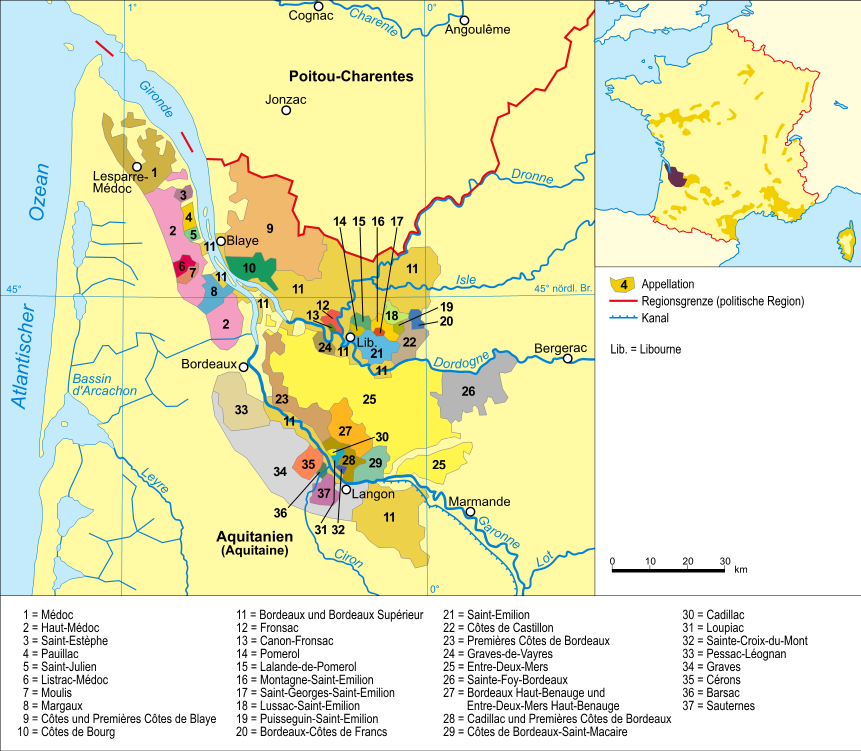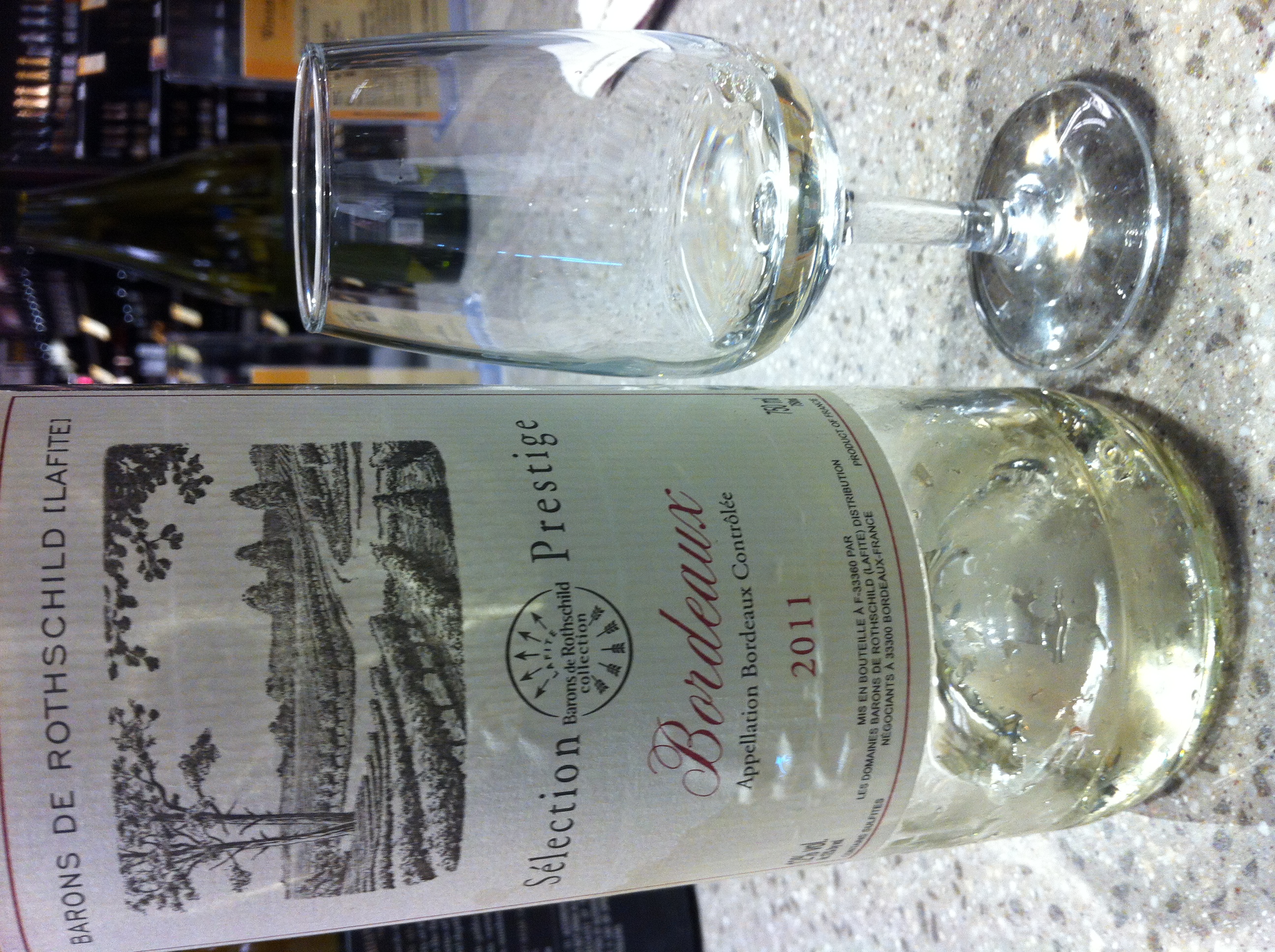|
Château Rol Valentin
Château Rol Valentin is a Bordeaux wine from the appellation Saint-Émilion Grand Cru, an area next to Saint-Émilion proper. Do not confuse such wines with those that are ranked ''Grand cru'' in the Classification of Saint-Émilion wine. The winery is located in the Right Bank of France’s Bordeaux wine region in the commune of Saint-Émilion, in the department Gironde. The wine's small production and use of oak in combination with high prices and ratings places it among Saint-Émilion's ''"Vins de garage"''. BB&R History In 1994 the estate was acquired by Eric Prisette, a retired professional footballer, and his wife Virginie. Rol Valentin employs[...More Info...] [...Related Items...] OR: [Wikipedia] [Google] [Baidu] |
Bordeaux Wine
Bordeaux wine (; ) is produced in the Bordeaux region of southwest France, around the city of Bordeaux, on the Garonne River. To the north of the city, the Dordogne River joins the Garonne forming the broad estuary called the Gironde; the Gironde department, with a total vineyard area of 110,800 hectares, is the second largest wine-growing area in France behind the Languedoc-Rousillon. Average vintages produce over 700 million bottles of wine, ranging from large quantities of daily table wine to some of the world's most expensive and prestigious wines. The vast majority of wine produced in Bordeaux is red (sometimes called "claret" in Britain), with sweet white wines (most notably Sauternes), dry whites, and (in much smaller quantities) rosé and sparkling wines ( Crémant de Bordeaux) collectively making up the remainder. Bordeaux wine is made by more than 5,660 producers or ''châteaux''. There are 65 appellations of Bordeaux wine. History Viticulture was introduce ... [...More Info...] [...Related Items...] OR: [Wikipedia] [Google] [Baidu] |
Appellation D'origine Contrôlée
In France, the ''appellation d'origine contrôlée'' (, ; abbr. AOC ) is a label that identifies an agricultural product whose stages of production and processing are carried out in a defined geographical area – the ''terroir'' – and using recognized and traditional know-how. The specificity of an AOC product is determined by the combination of a physical and biological environment with established production techniques transmitted within a human community. Together, these give the product its distinctive qualities. The defining technical and geographic factors are set forth in standards for each product, including wines, cheeses and meats. Other countries and the European Union have similar labeling systems. The European Union's protected designation of origin (PDO and PGI) system has harmonized the protection of all geographical indications and their registration. When labelling wine however, producers may still use recognized traditional terms like AOC, and are not requ ... [...More Info...] [...Related Items...] OR: [Wikipedia] [Google] [Baidu] |
Saint-Émilion AOC
Saint-Émilion () is an ''appellation d'origine contrôlée'' (AOC) for red wine in the Bordeaux wine region of France, where it is situated in the Libourne subregion on the right bank of the Dordogne (river), Dordogne. As a cultural landscape demonstrating a long, living history of wine-making (dating from Roman times), Saint-Émilion was registered as a UNESCO World Heritage Site in 1999. Its represent 67.5% of the total area of wine-producing communes (Saint-Émilion, Saint-Christophe-des-Bardes, Saint-Hippolyte, Gironde, Saint-Hippolyte, Saint-Étienne-de-Lisse, Saint-Laurent-des-Combes, Gironde, Saint-Laurent-des-Combes, Saint-Pey-d'Armens, Saint-Pey-d’Armens, Saint-Sulpice-de-Faleyrens, Vignonet, and a part of the Libourne commune) and 6% of the total Bordeaux vineyard. The wines of Saint-Émilion are typically blended from different grape varieties, the three main ones being Merlot, Cabernet Franc and Cabernet Sauvignon. Classification Since 1955, there has been ... [...More Info...] [...Related Items...] OR: [Wikipedia] [Google] [Baidu] |
Classification Of Saint-Émilion Wine
In 1955, the Saint-Émilion AOC, wines of Saint-Émilion in the wine-growing region of Bordeaux wine, Bordeaux were classified. Unlike the Bordeaux Wine Official Classification of 1855 covering wines from the Médoc and Graves (wine region), Graves regions, the Saint-Émilion list is updated every 10 years or so. Following the initial classification, the list was updated in 1969, 1986, 1996, 2006, 2012, and 2022. However the 2006 classification was declared invalid following a series of legal actions, and the 1996 version of the classification has been reinstated for the vintages from 2006 to 2009. The region's ''Syndicat Viticole'' started planning for a classification of St.-Émilion wine in 1930, but it was not until October 7, 1954, that the principles behind the classification became official when the Institut National des Appellations d'Origine, INAO agreed to take responsibility for handling the classification. The first list of classified St.-Émilion estates was published ... [...More Info...] [...Related Items...] OR: [Wikipedia] [Google] [Baidu] |
Winery
A winery is a building or property that produces wine, or a business involved in the cultivation and production of wine, such as a wine company. Some wine companies own many wineries. Besides wine making equipment, larger wineries may also feature warehouses, bottling lines, laboratories, and large expanses of tanks known as tank farms. Wineries may have existed as long as 8,000 years ago. Ancient history The earliest known evidence of winemaking at a relatively large scale, if not evidence of actual wineries, has been found in the Middle East. In 2011 a team of archaeologists discovered a 6000 year old wine press in a cave in the Areni region of Armenia, and identified the site as a small winery. Previously, in the northern Zagros Mountains in Iran, jars over 7000 years old were discovered to contain tartaric acid crystals (a chemical marker of wine), providing evidence of winemaking in that region. Archaeological excavations in the southern Georgian region of Kvemo Kartli ... [...More Info...] [...Related Items...] OR: [Wikipedia] [Google] [Baidu] |
Bordeaux Wine Region
The wine regions of Bordeaux in France are a large number of wine growing areas, differing widely in size and sometimes overlapping, which lie within the overarching wine region of Bordeaux, centred on the city of Bordeaux and covering the whole area of the Gironde department of Aquitaine. The Bordeaux region is naturally divided by the Gironde Estuary into a Left Bank area which includes the Médoc and Graves and a Right Bank area which includes the Libournais, Bourg and Blaye. The Médoc is itself divided into Haut-Médoc (the upstream or southern portion) and Bas-Médoc (the downstream or northern portion, often referred to simply as "Médoc"). There are various sub-regions within the Haut-Médoc, including St-Estèphe, Pauillac, St.-Julien and Margaux and the less well known areas of AOC Moulis and Listrac. Graves includes the sub-regions of Pessac-Léognan and Sauternes (among others), and Sauternes in turn includes the sub-region of Barsac. The Libournais includes ... [...More Info...] [...Related Items...] OR: [Wikipedia] [Google] [Baidu] |
Gironde
Gironde ( , US usually , ; , ) is the largest department in the southwestern French region of Nouvelle-Aquitaine. Named after the Gironde estuary, a major waterway, its prefecture is Bordeaux. In 2019, it had a population of 1,623,749.Populations légales 2019: 33 Gironde INSEE The famous Bordeaux wine region is in Gironde. It has six arrondissements, making it one of the departments with the most arrondissements ( [...More Info...] [...Related Items...] OR: [Wikipedia] [Google] [Baidu] |
Oak (wine)
Oak is used in winemaking to vary the color, flavor, tannins (wine), tannin profile and texture of wine. It can be introduced in the form of a barrel during the fermentation (wine), fermentation or aging barrel, aging periods, or as free-floating chips or stave (wood), staves added to wine fermented in a vessel like stainless steel. Oak barrels can impart other qualities to wine through evaporation and low level exposure to oxygen.J. Robinson ''Jancis Robinson's Wine Course'' Third Edition pg 91-93 Abbeville Press 2003 History In early History of wine, wine history, the amphora was the vessel of choice for the storage (wine), storage and transportation of wine. Due to the perishable nature of wood material it is difficult to trace the usage of barrels in history. The Greek historian Herodotus noted that ancient Mesopotamians used barrels made of palm wood to transport wine along the Euphrates. Palm is a difficult material to bend and fashion into barrels, however, and wine merch ... [...More Info...] [...Related Items...] OR: [Wikipedia] [Google] [Baidu] |
Garagistes
The garagistes refers to a group of winemakers in the Bordeaux region, producing ''"vins de garage"'', "garage wine". A group emerged in the mid-1990s in reaction to the traditional style of red Bordeaux wine, which is highly tannic and requires long ageing in the bottle to become drinkable. The garagistes developed a style more consistent with perceived international wine tastes. For red wines this means "bigger, bolder, fruitier wines, often with sometimes a higher alcohol content." The new style for white wines is a more pronounced oak taste with some residual sugar. This new style of wine is controversial, and purists claim that the wines will not age well and they don't reflect well the ''terroir'' of the region, nor the typicity of the grape varieties used. Characterised as "winemaker's wine whose attributes reflect a disregard for the traditional handling of its particular ''terroir''", the term is sometimes used somewhat as a backhanded compliment; in light of this, vins de ... [...More Info...] [...Related Items...] OR: [Wikipedia] [Google] [Baidu] |
Stephane Derenoncourt
Stephane may refer to: * Stéphane, a French given name * Stephane (headdress) A stephane (''ancient Greek'' στέφανος, from ''στέφω'' (stéphō, “I encircle”), '' Lat.'' Stephanus = wreath, decorative wreath worn on the head; crown) was a decorative headband or circlet made of metal, often seen on depiction ..., a vestment in ancient Greece * Stephane (Paphlagonia), a town of ancient Paphlagonia, now in Turkey {{dab ... [...More Info...] [...Related Items...] OR: [Wikipedia] [Google] [Baidu] |
Oenologist
Oenology (also enology; ) is the science and study of wine and winemaking. Oenology is distinct from viticulture, which is the science of the growing, cultivation, and harvesting of grapes. The English word oenology derives from the Greek word ''oinos'' ( οἶνος) "wine" and the suffix ''–logia'' ( -λογία) the "study of". An oenologist is an expert in the science of wine and of the arts and techniques for making wine. Education and training University programs in oenology and viticulture usually feature a concentration in science for the degree of Bachelor of Science (B.S, B.Sc., Sc.B), and as a terminal master's degree — either in a scientific or in a research program for the degree of Master of Science (M.S., Sc.M.), e.g. the master of professional studies degree. Oenologists and viticulturalists with doctorates often have a background in horticulture, plant physiology, and microbiology. Related to oenology are the professional titles of ''sommelier'' and master ... [...More Info...] [...Related Items...] OR: [Wikipedia] [Google] [Baidu] |
Merlot
Merlot ( ) is a dark-blue-colored wine grape variety that is used as both a blending grape and for varietal wines. The name ''Merlot'' is thought to be a diminutive of , the French name for the blackbird, probably a reference to the color of the grape. Its softness and "fleshiness", combined with its earlier ripening, make Merlot a popular grape for blending with the sterner, later-ripening Cabernet Sauvignon, which tends to be higher in tannin. Along with Cabernet Sauvignon, Cabernet Franc, Malbec, and Petit Verdot, Merlot is one of the primary grapes used in Bordeaux wine, and it is the most widely planted grape in the Bordeaux wine regions. Merlot is also one of the most popular red wine varietals in many markets. This flexibility has helped to make it one of the world's most planted grape varieties. As of 2004, Merlot was estimated to be the third most grown variety at globally.J. Robinson (ed) ''The Oxford Companion to Wine'' Third Edition, Oxford University P ... [...More Info...] [...Related Items...] OR: [Wikipedia] [Google] [Baidu] |





